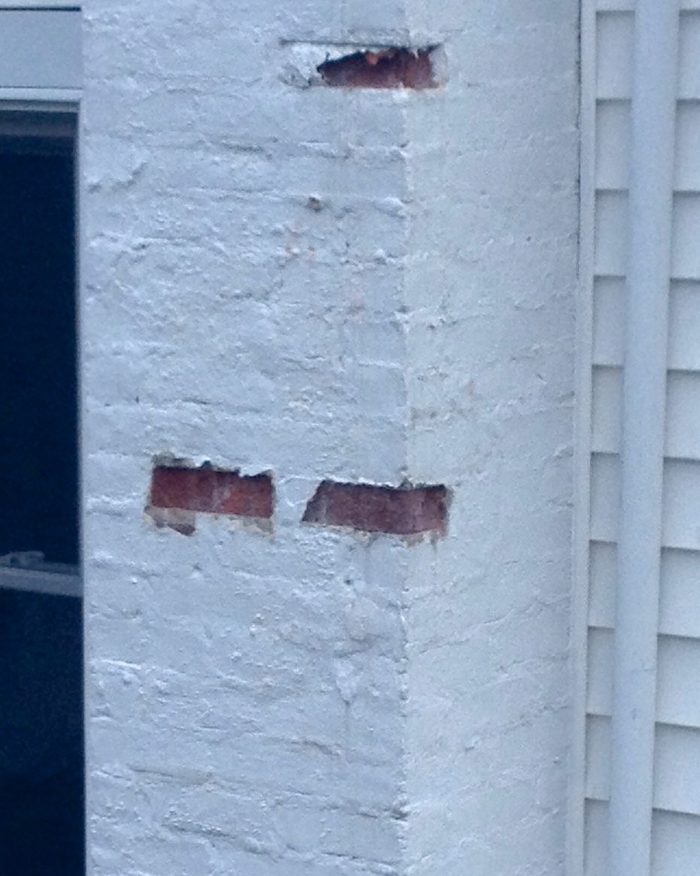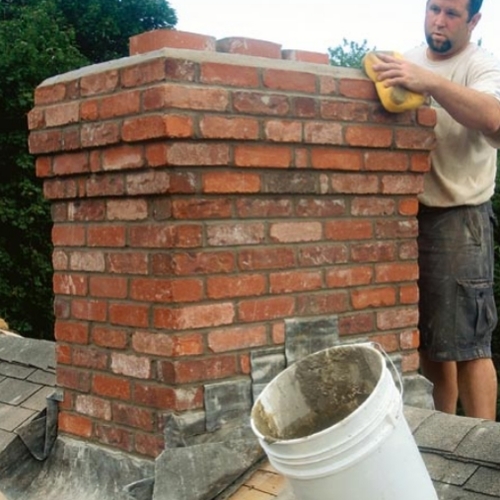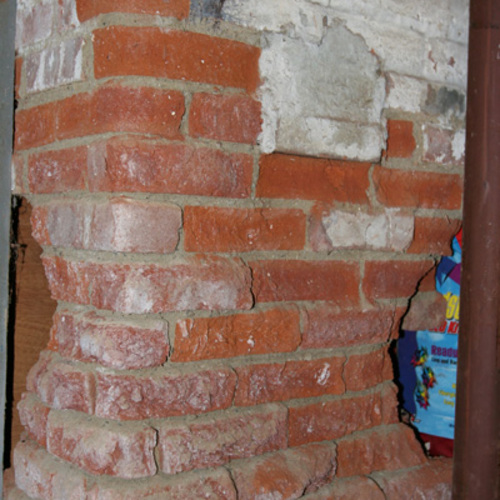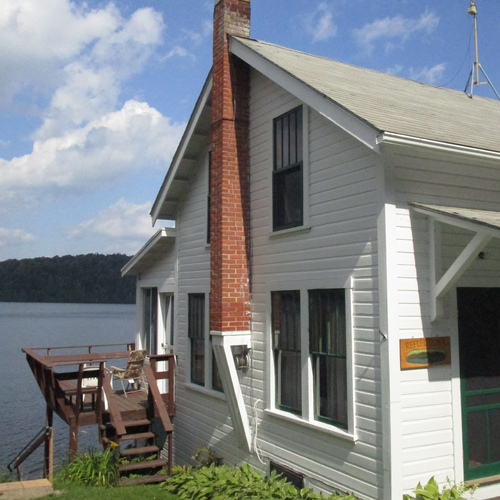
Image Credit: Page Hyler
Between the spalling bricks and a persistent leak that has damaged a mudroom ceiling, the chimney on Page Hyler’s 1900 farmhouse is proving to be a problem that just can’t get fixed.
“We have had damage around the ceiling and wall of the chimney that I now know is efflorescence,” Hyler writes in a post at Green Building Advisor’s Q&A forum. Caulking the flashing at the roofline helped, at least temporarily, but Hyler eventually called in an out-of-town company to inspect and seal the bricks. Problems persist.
“I contacted someone else who refinishes old houses in the area and he thinks that we should patch up the bricks and repaint [them] with an oil-based paint because the chimney looks to be in decent shape otherwise,” Hyler writes. “He thinks the damage in the mudroom is the flashing around the chimney.
“I was wondering if there is efflorescence under tha painted brick would the oil paint suggestion solve problem or do I need to tear down the chimney and rebuild it.”
As if the situation wasn’t problematic enough, Hyler is planning to sell the house. Should that change the repair strategy?
Most likely causes: bad flashing or flue-gas condensation
Faulty flashing is one possible culprit, says GBA senior editor Martin Holladay, but it also could be moisture resulting from the condensation of flue gases.
Leaks at the intersection of chimney and roof aren’t at all uncommon, and while there are several possible corrections, Holladay thinks the most reliable way is with a technique called through-chimney flashing. “Proper installation of through-chimney flashing requires all of the bricks above the roofline to be disassembled,” Holladay writes. “After the flashing work is done, the chimney top can be rebuilt with the old bricks or with new bricks.”
Condensation…
Weekly Newsletter
Get building science and energy efficiency advice, plus special offers, in your inbox.

This article is only available to GBA Prime Members
Sign up for a free trial and get instant access to this article as well as GBA’s complete library of premium articles and construction details.
Start Free TrialAlready a member? Log in














2 Comments
Great information
I'm not a building professional, but I always try to follow articles on GBA just to learn more as home owner. This Q&A has some great information in it about old chimney's that I think will be helpful in the future as we look at homes to buy and things to look for and at regarding old chimney's before we further commit and have an inspector look over the house.
Awesome advice
The chimney is one of those things that often gets forgotten, we know its there but because its job is for the most part hidden it can become neglected. I work for a company that manufactures fireplaces and we cannot stress the importance of having a working, safe chimney.
Log in or become a member to post a comment.
Sign up Log in